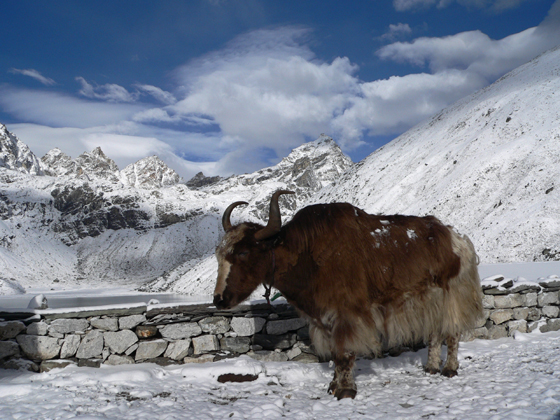Mohammad,
Thanks for your great talk and response. Here are the questions I posted and asked.
With regard to the focus of your talk - disparate data sources - how will data science move toward real, real time - for, for example, a) ensemble music making, and b) a realistic virtual earth e.g. for real, real time brain research at the 1) street view, 2) neuronal (cellular) and 3) nano (atomic) levels? How will one increase speed, but also with regard to any given item, how will we move between very disparate data sources at very different scales? In your example with Warfarin, will some statistical approaches be faster than others, while retaining the robustness of your WHOLE system/model/example? In a holistic hypothetical real virtual earth e.g. in a Google Street View/Maps/Earth with TIME SLIDER with OpenSimulator, conceptually, for example, with WIKIDATA (Wikipedia's 4 year old database developing for 358 languages), and at the street view, neuronal and nano levels - and retaining the holism - how can one increase acceleration?
I'm developing World University and School, which is like Wikipedia in 358 languages with CC MIT OCW in 7 languages and CC Yale OYC, accrediting on these to offer free CC online university and I.B. high school degrees planned in all countries' main languages, as well as facilitating wiki schools in all 7,943 languages.
Looking forward to staying in touch.
Best, Scott
--
- Scott MacLeod - Founder & President
- Please donate to tax-exempt 501 (c) (3)
- World University and School
- via PayPal, or credit card, here -
- or send checks to
- PO Box 442, (86 Ridgecrest Road), Canyon, CA 94516
- World University and School - like Wikipedia with best STEM-centric OpenCourseWare - incorporated as a nonprofit university and school in California, and is a U.S. 501 (c) (3) tax-exempt educational organization.
World University and School is sending you this because of your interest in free, online, higher education. If you don't want to receive these, please reply with 'unsubscribe' in the body of the email, leaving the subject line intact. Thank you.
*
| 29 Sept | Mohammad Sadoghi | “ExpoDB: An Exploratory Data Science Platform” | Purdue University | Slides | Recording |
http://cognitive-science.info/community/weekly-update/
(I gave a talk in this series on May 5, 2016).
*
I found Purdue's Mohammad Sadoghi's replies after his IBM Cognitive Systems (CSIG) talk to my questions above on Thursday very helpful, which were something like:
a Selective integration of the whole of the system
b Active pathways within the whole of the system
*
Hi Daniel, Markus and Wikidatans,
Thanks for your interesting "modeling elevation with Wikidata" conversation.
Daniel, in a related vein and conceptually, how would you model elevation change over time (e.g. in a Google Street View/Maps/Earth with TIME SLIDER, conceptually, for example) with Wikidata, building on the example you've already shared?
For example if one wanted to use Wikidata to model the 9 levels or 46 sublevels of Troy (https://en.wikipedia.org/
(On behalf of CC WUaS I'd like to explore facilitating doing this eventually in a realistic virtual earth, something like Google Street View/Maps/Earth with time slider with OPEN SIMULATOR, conceptually, and as a World Univ & Sch "classroom" and as a way, for example, for archaeologists and related scientists to add each of their own videos and photographic data, say, from all of their digs in 1910 of level X and contrast this with each of all of their own videos from level Y in 1958 (if digs were happening in these years) -https://radalma.wikispaces.
Would there be a wikidata Q-item for all 46 sub levels, for example?
Thank you.
Bests, Scott
*
Am 27.09.2016 um 23:14 schrieb Info WorldUniversity:
> Hi Daniel, Markus and Wikidatans,
>
> Thanks for your interesting "modeling elevation with Wikidata" conversation.
>
> Daniel, in a related vein and conceptually, how would you model elevation change over time (e.g. in a Google Street View/Maps/Earth with TIME SLIDER, conceptually, for example) with Wikidata, building on the example you've already shared?
You would use the "point in time" qualifier. We use this a lot with population data, see for instance <https://www.wikidata.org/
> Would there be a wikidata Q-item for all 46 sub levels, for example?
That's a question of desirable modelling granularity. I would suppose that for troy, we would have one item per sub-level, since it's such a famous site. But we would probably not have every sub-level of every archeological excavation.
This is always a question of balance, and always a matter of debate.
> Hi Daniel, Markus and Wikidatans,
>
> Thanks for your interesting "modeling elevation with Wikidata" conversation.
>
> Daniel, in a related vein and conceptually, how would you model elevation change over time (e.g. in a Google Street View/Maps/Earth with TIME SLIDER, conceptually, for example) with Wikidata, building on the example you've already shared?
You would use the "point in time" qualifier. We use this a lot with population data, see for instance <https://www.wikidata.org/
> Would there be a wikidata Q-item for all 46 sub levels, for example?
That's a question of desirable modelling granularity. I would suppose that for troy, we would have one item per sub-level, since it's such a famous site. But we would probably not have every sub-level of every archeological excavation.
This is always a question of balance, and always a matter of debate.
*
....
.jpg)

